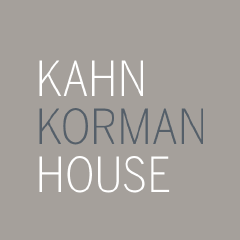I love beginnings. I marvel at beginnings. I think it is beginning that confirms continuation.1 “The Invisible City,” International Design Conference, Aspen, Colorado, 19 June 1972. In What Will Be Has Always Been: The Words of Louis I. Kahn, ed. Richard Saul Wurman (New York: Rizzoli International Publications), 1986, p. 150
An architect can build a house and build a city in the same breath, if he thinks about it as being a marvelous, inspired, expressive realm.2 Ibid, p. 151
Without light, there is no architecture.3 “Lecture at Pratt Institute,” 1973, qtd in Louis Kahn: Essential Texts, ed. Robert Twombly (New York: W.W. Norton & Co., 2003), p. 272.
Space is not a space unless you can see the evidence of how it was made.4“Louis Kahn,” Conversations with Architects, ed. John W Cook and Heinrich Klotz (New York: Praeger), 1973, p. 212.
Every building is a house, regardless of whether it is a Senate, or whether it is just a house.5 Qtd in Louis I. Kahn: Complete Works, 1935–1974, 2nd ed., eds. Heinz Ronner and Sharad Jhaveri, (Basel and Boston: Birkhauser), 1987, p. 379.
We are born out of light and every space we live in is thought of in the choreography, you might say, in the making of a plan which is in search of light and that the structure is the maker of light. You think of structures where the light is going to be given, not just what’s going to encase a room. So, my consciousness of light comes from that source – that without light you don’t have space, or, you might say, a room.6 “A House Within a House,” transcribed and edited by Melissa Steeley and William Whitaker, The Architectural Archives, University of Pennsylvania. Qtd in Pierson William Booher, “Louis I. Kahn’s Fisher House: A Case Study on the Architectural Detail and Design Intent.” Thesis in Historic Preservation, University of Pennsylvania, p. 57.
A plan is a society of rooms. The rooms relate to each other to strengthen their own unique nature.7 “The Room, the Street, and Human Agreement,” AIA Gold Medal acceptance speech, Detroit, June 24, 1971. AIA Journal, vol 56, Sep 1971, p. 33.
When I first was introduced to modern architecture, the books were being burned. The books that I care for a great deal somehow did not look as bright as the pages of Le Corbusier’s explorations, his drawings, his speculations, his point of view. I even learned that a simple house, which was never a consideration in my training, became something of importance.8 “The White Light and the Black Shadow,” Lecture at Princeton University, March 1968. Qtd. in What Will Be, p. 15.
Let us consider the nature of house as being different from a house, and being different from home, for home can only exist when people are in it. They are the creators of home. You don’t build a home. You build a house. At best, if you build a house, there comes out of it a sense of a way of life, a reflection of a way of life which inspires your own way of living. The greater the way of life, the more free is the way of living. 9Lecture on the education and training of architects, Tel Aviv, 20 Dec 1973. Qtd. in What Will Be, p. 249.
In building a house you consider the bedrooms as being in a field with no roof so you can see the stars. Then you discover that the room isn’t just a sleeping room, but it also can become a sickroom. And then you need a cup of tea, and then you long for the kitchen; and slowly, stealthily, the bedroom creeps to the kitchen—maybe even begs for forgiveness. The living room is the same with all its freedoms. So also the kitchen. It combines in a loving way, and understanding way. Its strength is gathered not by looking into how things are made now, but by how they could be made.10 “The Invisible City,” International Design Conference, Aspen, Colorado, 19 June 1972. Qtd. in What Will Be, p. 154.
The more deeply a thing is engaged in the unmeasurable, the more deeply lasting is its value. So the toccata and the fugue you could not deny. You couldn’t deny some of the great works of art, because they are really born out of the unmeasurable. And so I think that what you felt was, again, just wonder, not knowledge or knowing. You felt that knowledge was really not as important as your sense of wonder which was a great feeling—without reservation, without obligation, without accounting for yourself, just the closest in-touchness with your intuitive wonder. From wonder must come realization, because in the record of your making you have gone through every law of nature. It is part of you… Intuition is your most exacting sense.11 “Lecture at Pratt Institute,” 1973, qtd in Louis Kahn: Essential Texts, p. 269-70.
Design is personal. There is in general no perfect design. The striving for perfection is never realized though the desiring of perfection is the constant motivation of the artist. In the work completed is the seed of the work that follows. A man really only does one work.12 “An Architect Speaks His Mind,” Interview with Beverly Russell, House and Garden, Oct 1972, p.219
I look at my work with a sense of what is forthcoming. The not yet said, the not yet made is what puts the spark of life into you.13 Kimbell Museum Dedication, Fort Worth, Texas, October 1972. Qtd in What Will Be, p. 177.
